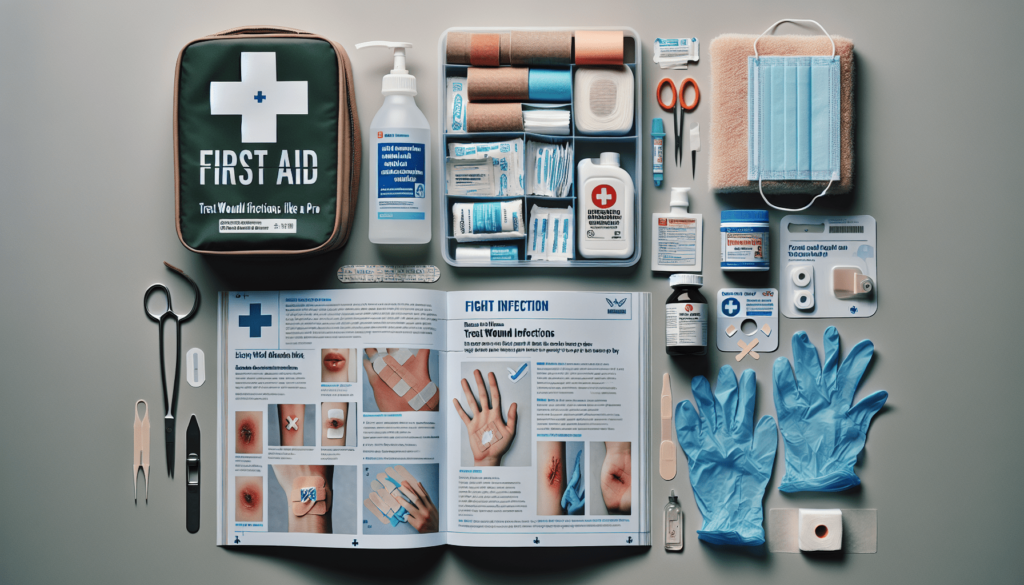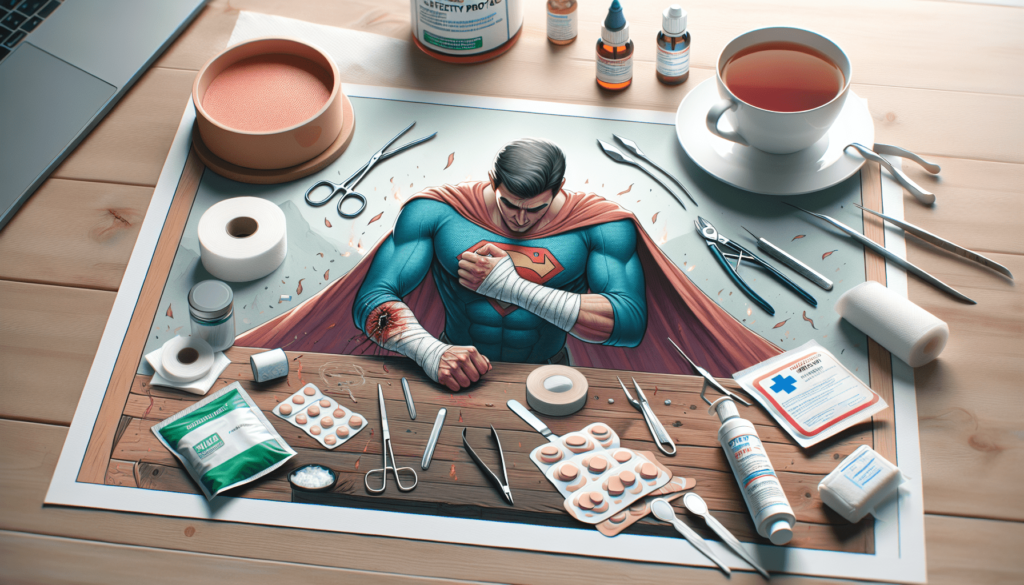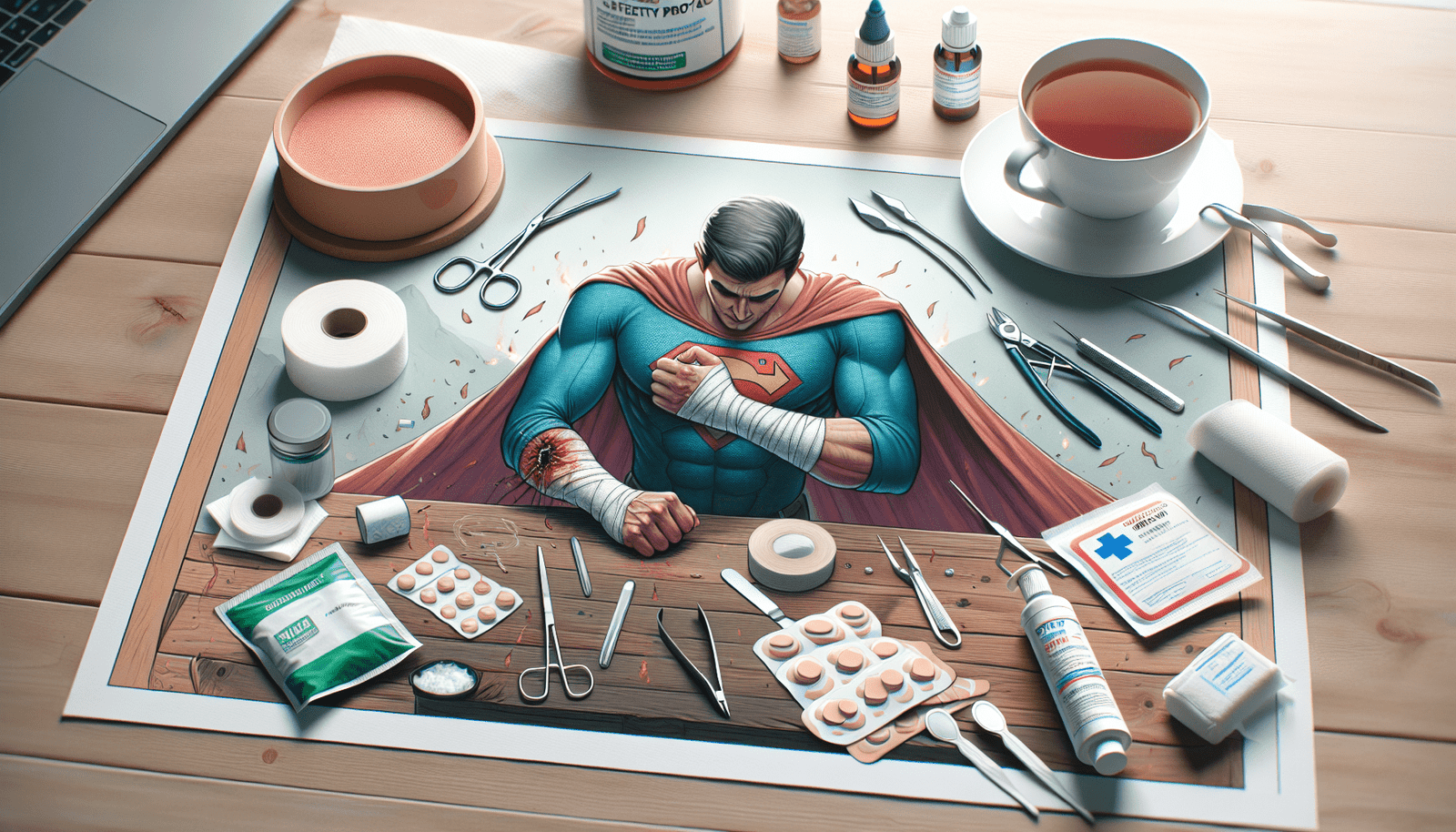Imagine a life of self-sufficiency and resilience, where you and your loved ones thrive off the grid. You cultivate a survival garden, acquire the knowledge of identifying edible plants, and are prepared for emergencies with DIY projects like homemade water filters and solar power systems. From wilderness navigation to emergency medical skills, you gain the confidence to handle any situation. And amidst this journey, you also acquire the necessary expertise to treat wound infections like a professional, ensuring the health and well-being of your family. Step into the world of self-reliance and embark on your own off-grid adventure, as you discover the empowering freedom that comes with being prepared for life’s unexpected twists.

Understanding Wound Infections
A wound infection occurs when harmful bacteria or other microorganisms invade a wound, leading to inflammation, pain, and other symptoms. These infections can occur in both minor and major wounds, and it is crucial to understand the causes, signs, and symptoms of wound infections in order to effectively treat and prevent them.
What is a wound infection?
A wound infection refers to the invasion of a wound by bacteria, viruses, fungi, or other microorganisms. When these harmful organisms enter a wound, they can multiply and cause an infection, leading to increased pain, redness, swelling, and discharge from the wound. In some cases, the infection can spread to surrounding tissues and even to the bloodstream, causing more severe complications.
Causes of wound infections
Wound infections can be caused by various factors, including poor wound care, inadequate cleaning or sterilization of wound dressing materials, and the presence of foreign objects or debris in the wound. Other risk factors that can increase the likelihood of developing a wound infection include pre-existing medical conditions such as diabetes or a weakened immune system, as well as certain lifestyle factors such as smoking or poor nutrition.
Signs and symptoms of wound infections
Recognizing the signs and symptoms of a wound infection is essential for prompt treatment. Some common signs of a wound infection include increased pain or tenderness at the site of the wound, redness or swelling that extends beyond the initial wound area, warmth or heat around the wound, and the presence of pus or other abnormal discharge. In more severe cases, fever, chills, and a foul odor from the wound may also be present.
Preventing Wound Infections
Preventing wound infections is key to ensuring proper wound healing and reducing the risk of complications. By following some simple guidelines, you can significantly reduce the chances of developing an infection in your wounds.
Cleanse the wound properly
One of the crucial steps in preventing wound infections is proper wound cleansing. Start by washing your hands thoroughly with soap and water. Then, gently clean the wound using mild soap or a sterile saline solution. Avoid using harsh or irritant substances, as they can further damage the wound and increase the risk of infection.
Use sterile dressings
Using sterile dressings on your wounds can help create a barrier against harmful microorganisms. Before applying a dressing, make sure to clean the wound as mentioned above. Then, use clean hands or sterile gloves to handle the dressing, ensuring that it does not come into contact with any contaminated surfaces.
Promote good hand hygiene
Maintaining good hand hygiene is crucial in preventing wound infections. Always wash your hands thoroughly with soap and water before and after touching the wound or changing dressings. If soap and water are not available, use a hand sanitizer with at least 60% alcohol content.
Avoid touching the wound with dirty hands
To minimize the risk of introducing bacteria or other microorganisms into the wound, avoid touching it with dirty hands. If you need to inspect or clean the wound, make sure to wash your hands thoroughly first.
Keep the wound dry
Moisture can create a conducive environment for the growth of bacteria and other microorganisms. Therefore, it is important to keep the wound dry whenever possible. If you need to cover the wound with a dressing, make sure it is breathable and does not trap moisture.
Change dressings regularly
Regularly changing dressings ensures that the wound remains clean and free from infection. Follow the instructions provided by your healthcare provider or wound care specialist regarding the frequency of dressing changes. Monitor the wound closely for any signs of infection and seek medical attention if needed.
Home Remedies for Treating Wound Infections
While proper wound care is essential in preventing and treating infections, there are also some home remedies that can aid in the healing process.
Applying a warm compress
A warm compress can help improve blood circulation to the wound area and promote healing. Soak a clean cloth or towel in warm water and gently apply it to the wound for 10-15 minutes, several times a day.
Using antibacterial ointments or creams
Antibacterial ointments or creams can help prevent and treat minor wound infections. Apply a thin layer of the ointment or cream to the wound after cleansing and before dressing it.
Applying honey or turmeric paste
Honey and turmeric have natural antibacterial properties and can aid in the healing of wounds. Apply a small amount of honey or turmeric paste to the wound and cover it with a clean dressing. Change the dressing regularly.
Using herbal remedies, like tea tree oil
Tea tree oil has antimicrobial properties that can help prevent and treat wound infections. Dilute a few drops of tea tree oil in a carrier oil, such as coconut oil, and apply it to the wound using a clean cotton ball.
Ozonated oils for wound healing
Ozonated oils, such as ozonated olive oil or sunflower oil, have been shown to promote wound healing and prevent infection. Apply a thin layer of the oil to the wound and cover it with a clean dressing.
Epsom salt soaks
Epsom salt soaks can help cleanse the wound and promote healing. Dissolve a tablespoon of Epsom salt in warm water and soak the wound for 15-20 minutes, several times a day.
When to Seek Medical Help
While many minor wound infections can be treated at home, there are certain situations where it is important to seek medical help.
Signs of a severe wound infection
If you experience any of the following symptoms, it is important to seek immediate medical attention: high fever, severe pain or swelling, red streaks spreading from the wound, or a foul odor coming from the wound.
When home remedies are not effective
If you have been diligently following home remedies for a wound infection, but the condition does not show signs of improvement after a few days, it is advisable to consult a healthcare professional.
When the wound is deep or won’t stop bleeding
Deep wounds or wounds that won’t stop bleeding may require medical intervention. Seek immediate medical attention if you have a deep wound or if bleeding persists after applying direct pressure.
If you have a compromised immune system
Individuals with compromised immune systems, such as those with diabetes or undergoing chemotherapy, are at a higher risk of developing severe wound infections. It is important to seek medical help promptly if you have a compromised immune system and suspect a wound infection.

Medical Treatments for Wound Infections
In some cases, medical treatments may be necessary to effectively treat wound infections. These treatments can range from oral medications to more invasive procedures.
Oral antibiotics
For moderate to severe wound infections, oral antibiotics may be prescribed by a healthcare professional. These antibiotics work to eliminate the infection-causing bacteria from the body.
Topical antibiotic creams or ointments
In addition to oral antibiotics, healthcare providers may also prescribe topical antibiotic creams or ointments to be applied directly to the wound. These medications can help eliminate bacteria and promote healing.
Wound cultures and lab testing
In cases of severe or recurring infections, healthcare providers may perform wound cultures and lab testing to identify the specific bacteria causing the infection. This information helps guide treatment decisions and ensures appropriate antibiotic therapy.
Debridement
Debridement is a medical procedure in which dead or infected tissue is removed from the wound. This promotes healing and prevents the spread of infection.
Wound irrigation
Wound irrigation involves flushing the wound with a sterile solution to remove debris and bacteria. This helps clean the wound and reduce the risk of infection.
Proper Wound Care
Proper wound care is crucial in preventing and treating infections. Follow these guidelines to ensure optimal wound healing and reduce the risk of complications.
Gently clean the wound
When cleaning the wound, be gentle to avoid further damage or infection. Use mild soap or a sterile saline solution to cleanse the wound, and rinse thoroughly with clean water.
Use proper wound dressings
Choose dressings that are appropriate for the type and severity of the wound. Some wounds may require a non-adherent dressing, while others may benefit from a hydrocolloid or foam dressing. Consult a healthcare professional for guidance on selecting the right dressing.
Change dressings regularly
Regularly changing dressings is essential in maintaining a clean and sterile environment for the wound. Follow the instructions provided by your healthcare provider on when and how to change dressings.
Avoid picking at scabs or removing crusts
Picking at scabs or removing crusts can disrupt the healing process and increase the risk of infection. Allow the scabs and crusts to naturally fall off on their own.
Complications of Wound Infections
If left untreated or improperly treated, wound infections can lead to various complications. It is important to be aware of these potential complications and take appropriate measures to prevent them.
Cellulitis
Cellulitis is a bacterial skin infection that can occur when a wound infection spreads to the surrounding tissues. It can cause redness, swelling, and pain, and may require prompt medical attention.
Abscess formation
An abscess is a collection of pus that can form within tissues or organs as a result of a wound infection. Abscesses may require drainage and antibiotic treatment.
Delayed wound healing
Wound infections can delay the healing process, leading to longer recovery times and a higher risk of complications. Proper wound care and treatment are essential in preventing delayed wound healing.
Sepsis
Sepsis is a life-threatening condition that can occur when an infection spreads throughout the body, leading to organ dysfunction. Prompt medical attention is crucial in treating sepsis.
Precautions and Safety Measures
Taking precautions and following safety measures can help reduce the risk of wound infections and ensure a safe healing process.
Always clean and disinfect tools used on wounds
When using tools or instruments on wounds, make sure they are properly cleaned and disinfected. This reduces the risk of introducing bacteria or other harmful microorganisms into the wound.
Use proper protective gear
If you are involved in activities or occupations that increase the risk of wounds, such as gardening or construction work, make sure to use appropriate protective gear, such as gloves or safety goggles, to prevent injuries and minimize the risk of infection.
Avoid sharing personal items that may harbor bacteria
Sharing personal items such as towels, clothing, or razors can increase the risk of spreading bacteria and causing infections. Avoid sharing these items with others, especially if you have an open wound.
Lifestyle Changes to Support Wound Healing
Making certain lifestyle changes can promote wound healing and reduce the risk of infections.
Maintain a healthy diet
Eating a balanced diet rich in vitamins, minerals, and protein can provide the necessary nutrients for proper wound healing. Include plenty of fruits, vegetables, lean proteins, and whole grains in your diet.
Stay hydrated
Adequate hydration is essential for wound healing. Drink plenty of water throughout the day to keep your body hydrated and to support the healing process.
Quit smoking
Smoking can impair the body’s natural healing processes and increase the risk of complications. Quitting smoking can significantly improve wound healing and overall health.
Manage stress levels
Stress can negatively impact the immune system and impair the body’s ability to heal wounds. Practice stress management techniques such as exercise, meditation, or engaging in hobbies to reduce stress levels.
Get enough rest
Adequate rest and sleep are crucial for the body to heal properly. Make sure to get enough sleep and avoid overexertion to support the healing process.
Conclusion
Understanding how to prevent, recognize, and properly treat wound infections is essential in maintaining good health and well-being. By following proper wound care practices, utilizing home remedies when appropriate, and seeking medical help when necessary, you can effectively manage and treat wound infections. Taking control of your own health and well-being empowers you to lead a healthy and fulfilling life. Remember to always prioritize proper wound care and take the necessary precautions to promote optimal wound healing.

